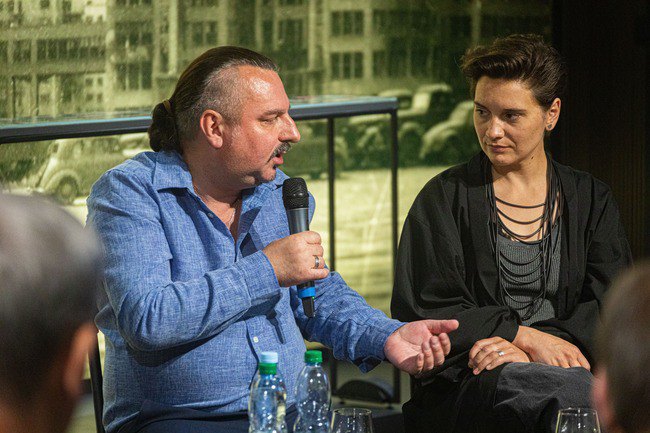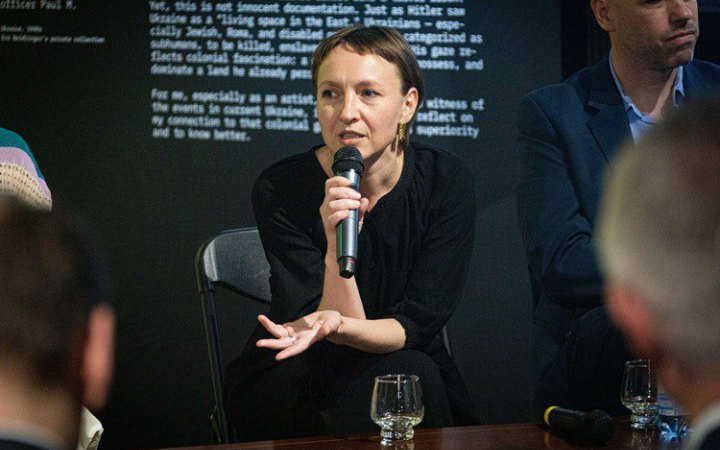On 5 July, a discussion entitled How to work with memory? took place, based on the Ukrainian–German exhibition Memory. Dialogues, which opened on the first floor of the main building of the National Museum of the History of Ukraine in World War II. This exhibition presents family artefacts from World War II created by Ukrainians and Germans – diaries, photos, letters.
The participants in the conversation were artists whose family artefacts and stories formed the basis of the exhibition: Polina Kuznetsova, the story of her grandmother who survived the German occupation in Kharkiv; Eva Neidlinger, a diary and photos taken by her great-grandfather in Ukraine, particularly in Kharkiv; Jenny Alten, her grandfather’s letters, which he wrote to his wife from Ukraine but never sent, keeping them in a Swiss bank until her death.
Fabian Mühlthaler, director of the Goethe-Institut in Ukraine, also joined the dialogue. The discussion was moderated by historian Roman Kabachiy.
During the discussion, participants talked about how European culture of remembrance of World War II is formed; how family archives help to rethink history; how memory unites generations and transcends borders.

Memory. Dialogues is a project about personal and family memories of World War II and how they are understood today. The exhibition presents episodes from the wartime lives of the Ukrainian and German peoples.
The exhibition is based on the family histories of three artists: Polina Kuznetsova (Ukraine), Eva Neidlinger (Germany) and Jenny Alten (Germany). Intersecting in the past, these lines form the basis for reflection on the legacy of World War II. The project was implemented in cooperation with the Museum Berlin-Karlshorst with the support of the German Embassy in Ukraine.










